- News
- Reviews
- Bikes
- Components
- Bar tape & grips
- Bottom brackets
- Brake & gear cables
- Brake & STI levers
- Brake pads & spares
- Brakes
- Cassettes & freewheels
- Chains
- Chainsets & chainrings
- Derailleurs - front
- Derailleurs - rear
- Forks
- Gear levers & shifters
- Groupsets
- Handlebars & extensions
- Headsets
- Hubs
- Inner tubes
- Pedals
- Quick releases & skewers
- Saddles
- Seatposts
- Stems
- Wheels
- Tyres
- Tubeless valves
- Accessories
- Accessories - misc
- Computer mounts
- Bags
- Bar ends
- Bike bags & cases
- Bottle cages
- Bottles
- Cameras
- Car racks
- Child seats
- Computers
- Glasses
- GPS units
- Helmets
- Lights - front
- Lights - rear
- Lights - sets
- Locks
- Mirrors
- Mudguards
- Racks
- Pumps & CO2 inflators
- Puncture kits
- Reflectives
- Smart watches
- Stands and racks
- Trailers
- Clothing
- Health, fitness and nutrition
- Tools and workshop
- Miscellaneous
- Buyers Guides
- Features
- Forum
- Recommends
- Podcast
review
 2024 Trek CarBack Radar Tail Light.jpg
2024 Trek CarBack Radar Tail Light.jpg£169.99
VERDICT:
Radar rear light that works, but not quite as well as the alternatives out there
Visible battery gauge
Good rear light
The name!
Detection is not as good as competition
Battery life is shorter than competition
Mount is not brilliant
Weight:
86g
Contact:
At road.cc every product is thoroughly tested for as long as it takes to get a proper insight into how well it works. Our reviewers are experienced cyclists that we trust to be objective. While we strive to ensure that opinions expressed are backed up by facts, reviews are by their nature an informed opinion, not a definitive verdict. We don't intentionally try to break anything (except locks) but we do try to look for weak points in any design. The overall score is not just an average of the other scores: it reflects both a product's function and value – with value determined by how a product compares with items of similar spec, quality, and price.
What the road.cc scores meanGood scores are more common than bad, because fortunately good products are more common than bad.
- Exceptional
- Excellent
- Very Good
- Good
- Quite good
- Average
- Not so good
- Poor
- Bad
- Appalling
As well as making you visible to other road users approaching from behind, the Trek CarBack Radar Rear Bike Light alerts you to their presence. While the visibility element works well, I found that the radar on other units I've tried works better, especially on winding roads.
If you're just after a rear light, check out our guide to the best.
I'm not going to spend too long talking about what a radar rear light does and whether you need one as I covered that in detail when I reviewed the Garmin Varia RTL515. I use one all the time; I think they are especially useful when I'm out on my own.
The CarBack's unique selling point is that it detects objects travelling at a greater speed than you from behind, from a greater distance, than the competition. Notice I said objects here; it doesn't have to be vehicles. It'll alert you to a cyclist, for example, speeding up to get (back) on your wheel in the same way.
The claimed distance is 240m, a full 100m longer than the Varia. Brilliant, if this claim were to live up to reality.
Distance is not the only important factor, though; there's also the radar beam width. The CarBack's beam width is narrower than the Varia on paper as well as in use. Trek's owner manual has a diagram that shows the beam width is 60m for the nearest 140m and narrows down to 30m at 240m. Garmin's owner manual claims a 40-degree beam width, actually getting wider as the distance increases. If my trig hasn't deserted me, that's a width of over 100m at a distance of 140m.
If you look at road design then, the CarBack detection would work well on straight roads, whereas the Garmin would work better on windy roads, with the wider beam angle.
Alert reliability
And that explains my experience with the CarBack. Most of the time, it'll alert you to an approaching object in good time. However, a significant number of times it'll alert you as a car is actually overtaking you, at the point where you already know it's there and it's too late to take any evasive action if necessary.
This is especially noticeable when riding with other people, and on smaller roads. Our Dave, who reviewed the Magene L508, also noticed that on average the CarBack's alert actually seems to come in later, that is when the approaching object is closer, than he experienced with the Magene.
Both of us mentioned in our reviews of the Varia and Magene respectively that the computer would show a car approaching before we would have heard it, initially thinking it was a false alarm, then looking over our shoulder and seeing that there was in fact something there. After a while we'd trust the radar more and more.
That is not the case with the CarBack. Don't get me wrong, it's still way better than not having radar, but the unit is not reliable in the same way.
Pairing options
The radar doesn't work on its own; it needs pairing with either a bike computer or phone, which it did without a hitch in both cases.
To pair it to your phone, you'll need to download the Trek Accessory App, which gives you more information, though I didn't use it other than checking it works with the light as I prefer to use a computer.
On my Hammerhead Karoo 2, alerting works in exactly the same way as the Magene (which I've also used a lot) and the Varia (shown below). Approaching vehicles appear in a strip down the side of the screen, and you get an indication of the speed differential through the colour of the strip. It bleeps at you every time it detects an object approaching as well, if that's how you've set up the unit.
Rear light
The rear light itself works well. You get four modes: day steady (25 lumens), day flash (90-lumen bursts), night steady (5 lumens) and night flash (5-lumen bursts).
On the Karoo, I can switch on 'autocontrol', which means the light will automatically switch on in the default mode when I start a ride, and switch off when the ride has ended. Default mode options are solid max, solid min, random flash and custom 1. I had mine set to random flash and was perfectly happy with the visibility this gave me to other road users, in daylight or in the dark.
This autocontrol option can be slightly less useful at a cafe stop if you want to switch the light off to conserve battery, or to stop it shining in people's eyes, as the computer will keep switching it back on again. If this bothers you, you can always switch the setting off.
Battery life and charging
Battery life for the CarBack is pretty close to the claimed seven hours in good conditions. I expect it will probably be a bit less when it's chilly out. Compared to the Varia's 16 hours and the Magene's 12 hours for a similar weight and brightness, that is significantly shorter.
There's a four-bar battery status indicator on the side of the light, which is useful. Your paired computer will also give you a low battery warning with about an hour of radar use to go. When the battery drops to less than 5%, the radar function switches off but the light will continue to shine, which is exactly how you'd want it to work.
Charging is via a USB-C port on the bottom and takes around four hours from empty. If you're charging your GPS at the same time as the CarBack, it might keep your light switched on, it says in the manual, and you have to switch it off manually. It's almost like that auto switch-on feature could get in the way of keeping the light charged.
The battery charge port is protected by a rubber flap, which is not as substantial as I'd like. On the first unit we were sent it started separating from the light – Trek told us that this would be covered by warranty; the second unit we were sent didn't have this problem. However, the way the flap is designed means it doesn't have sufficient retention power on the port, especially when it gets a bit dirty; it doesn't seem to stay on to cover the port fully, and after wet rides there was evidence of dirt on the inside of the flap/port protector. The Magene's is more substantial and works much better.
Mounting options
The CarBack's clamp is mounted with a rubber ladder type strap and a hook. The clamp itself is a proprietary affair that works on a round seatpost, but not so well on aero-shaped seatposts.
The catch on the clamp is a bit fiddly to undo; if you're wearing gloves you'll probably have to take them off to get the light off the clamp.
Both the Magene and the Varia use the Garmin type system which is much easier to get on and off, and works on a range of seatposts. I'd have preferred this system as there's a range of aftermarket mount options available for mounting on saddles, mudguards and racks. The CarBack will work with a Trek Blendr saddle mount, with compatible saddles.
Value
The CarBack costs £169.99, which is the same as Garmin's Varia RTL515, while other options are cheaper: Magene's L508 costs £99.99 on its Amazon store, and Bryton's Gardia R300L is £119.99.
I have used both the Magene and the Varia extensively and found them better in almost every way. Reading George's review of the Bryton, it looks like that's a better option too.
Conclusion
The thing I like best about Trek's CarBack is its name; it's what you shout when you're out with your mates and there's a... car back.
It doesn't reliably deliver on the promise of alerting you to cars that are 240m away in real-life conditions, and in the pursuit of that goal it seems that the narrower radar beam width actually gets in the way of alerting you to the presence of all cars in all circumstances.
The mount is OK, but not as versatile or as easy-to-use as what competing units use.
Given that it costs the same as the Garmin, which is the best one I've used, and that there are cheaper alternatives available – all with a better battery life – I struggle to recommend buying this one.
Right to reply
We put Iwein's findings to Trek, to give the company the right to reply:
Re: "Battery life for the CarBack is pretty close to the claimed seven hours in good conditions. I expect it will probably be a bit less when it's chilly out. Compared to the Varia's 16 hours and the Magene's 12 hours for a similar weight and brightness, that is significantly shorter."
Trek says: "We stated minimum battery life on the package, and generally the rider will experience far longer run times – in line with Magene's claimed battery life in most instances. Radar affects battery life more than the light itself - the CarBack light will run for over 20 hours in high steady mode in absence of cars to trigger the radar. CarBack differs from the competition in that it uses a more modern 77Ghz radar, through tuned antennas consisting of 4 transmitting channels and 3 receiving channels – the 77GHz radar is the current standard used for automobile radars."
Re: "The way the flap is designed means it doesn't have sufficient retention power on the port, especially when it gets a bit dirty; it doesn't seem to stay on to cover the port fully, and after wet rides there was evidence of dirt on the inside of the flap/port protector. The Magene's is more substantial and works much better."
Trek: "CarBack is rated as IP67. We have not gotten feedback on any closing issues on the charging port tab or experienced any issues with it firsthand, through test rider, retailer, or customer feedback. We just have not seen any ingress related issues that would affect performance – warranty claims are non-existent. We balanced ease of use for charging and closing the port with egress performance for an all-around best experience.
There are many elements of some of the competitor lights that are done well, and kudos to Magene on their port. That said, looking at each small component in isolation without weighting the items that really matter runs the risk of guiding readers to make buying decisions based on the wrong priority."
In response, Iwein says: "I agree that the port protector should not be a top priority for a buying decision, but if I were to pay the RRP, I'd be disapppointed with the port protector."
Re: "The clamp itself is a proprietary affair that works on a round seatpost, but not so well on aero-shaped seatposts. The catch on the clamp is a bit fiddly to undo; if you're wearing gloves you'll probably have to take them off to get the light off the clamp. Both the Magene and the Varia use the Garmin type system which is much easier to get on and off, and works on a range of seatposts. I'd have preferred this system as there's a range of aftermarket mount options available for mounting on saddles, mudguards and racks."
Trek: "We choose to keep the light mount in line with our Flare light family to ensure they work together and with our Blendr system. There are Blendr options for an integrated saddle mount as well as hard mounting a mount to an existing fender mount from your frame if you desire a hard mount. Garmin's mount is good, but does add extra complexity, especially if switching the radar light across multiple bikes."
Re: "Given that it costs the same as the Garmin, which is the best one I've used, and that there are cheaper alternatives available – all with a better battery life – I struggle to recommend buying this one."
Trek: "When we were developing CarBack, early on we established Garmin as the clear best in class – agree with your assessment there. It was the best at consistent detection of approaching cars and minimizing false positives and false negatives. It had to work every time – which was also our priority in developing CarBack, and we were proud to match the performance of Best in Class through all of our testing and rider feedback. In our experience the same cannot be said for the performance of the other competitors."
Verdict
Radar rear light that works, but not quite as well as the alternatives out there
road.cc test report
Make and model: Trek CarBack Radar Tail Light
Size tested: One Size
Tell us what the light is for, and who it's aimed at. What do the manufacturers say about it? How does that compare to your own feelings about it?
Trek says: "Ride with extra confidence with the Trek CarBack Radar Rear Light. The CarBack's radar helps detect rear-approaching vehicles from up to 240 m and provides audio and visual alerts through paired GPS head units for increased on-bike awareness.
Built with integrated best-in-class Daytime Running Lights that are visible from up to 2 km away, the CarBack is a must-have for every cyclist riding on shared roads."
Tell us some more about the technical aspects of the light?
Trek lists these details:
CarBack can detect and alert riders of rear-approaching vehicles from up to 240 m away
Compatible with most cycling GPS computers
Pair CarBack with the Trek Accessory app to see a vehicle's rear-approaching and passing distance on your smartphone
Designed with focus, flash and range to be daytime-visible from up to 2 km away
Four light-flash modes: Day Flash 90LM, Day Steady 25LM, Night Steady 5LM and Night Flash 5 LM
Visible fuel gauge LEDs make it easy to see the CarBack's 7+ hour battery status
IPX7 waterproof rating to confidently ride through wet conditions
Includes Quick Connect Plus rear mount and USB-C charging cable
Features:
Helps drivers see you: Enjoy best-in-class visibility with an interruptive flash pattern that's daytime-visible from up to 2 km away.
Helps you see cars: CarBack Radar can detect rear approaching vehicles from up to 240 m away.
Visible battery gauge: A four-bar LED battery gauge makes it easy to read your battery status.
Waterproof USB-C charging port: An IPX7 waterproof rating helps ensure trouble-free operation in all conditions, and the USB-C port makes it quick and easy to charge.
Compact design: A smaller profile makes it easier to mount CarBack on smaller frames and with saddle bags.
Universal ANT+ connectivity: CarBack pairs with most major cycling computers, so you can use it with the GPS head unit you already have.
Smart phone compatible: Connect CarBack to your phone through the Trek Accessory App, which will let you see the position of oncoming cars in real time or get audio alerts from your pocket.
Be seen, and see what's coming: A single light that helps drivers see the rider from further away and helps riders get advance notice of approaching cars equals more confidence on the road with fewer surprises.
Specs:
Battery Li-Poly 3.7Vdc 2000mAh 7.4Wh
Milliampere-hour (mAh) 2000mAh
Rechargeable USB-C
Charge time 4 hours
Dimensions 70 L x 50 W x 25 H (mm)
Waterproof Rating IPX7
Wireless compatibility ANT+ / Bluetooth
Blendr compatible Yes
Weight 87g
Rate the light for quality of construction:
5/10
The light itself is constructed well, no issues at all. The battery port protection flap is not designed that well. See the main review for details.
Rate the light for design and ease of use. How simple was the light to use?
9/10
Rate the light for the design and usability of the clamping system/s
4/10
The clamp doesn't work on all seatpost shapes, and it's fiddly to undo.
Rate the light for waterproofing. How did it stand up to the elements?
9/10
The light is rated IPX7, which means it should survive after submersion in up to 1m of water for 30 minutes. Plenty good enough for a bike light.
Rate the light for battery life. How long did it last? How long did it take to recharge?
4/10
The light lasts around the quoted 7 hours in ideal circumstances. I expect when it's cold it'll be less. That's less than half the Garmin Varia's battery life.
Rate the light for performance:
4/10
The light itself is fine, but the radar detection is not as good as the Magene, which wasn't as good as the Varia.
Rate the light for durability:
7/10
Rate the light for weight:
7/10
Rate the light for value:
4/10
You can get lights that detect more reliably and better, with a better mount and better battery life, for less money.
Tell us how the light performed overall when used for its designed purpose
On UK roads, the radar doesn't work as well as the other radar lights I've tried. The mount isn't as good as on the other lights either. The battery life is shorter as well. The light didn't meet my expectations.
Tell us what you particularly liked about the light
The battery status indicator is useful, and the rear light is very bright and visible from a long way away. I like the name as well. "Car back!"
Tell us what you particularly disliked about the light
The mount is disappointing, and the detection is not reliable.
How does the price compare to that of similar products in the market, including ones recently tested on road.cc?
The Trek CarBack is as expensive as the Garmin Varia; other alternatives are cheaper.
Did you enjoy using the light? Yes, it's still better than not having a radar.
Would you consider buying the light? No
Would you recommend the light to a friend? Probably not.
Use this box to explain your overall score
This is a decent rear light, with radar that doesn't work as well as the competition in real life conditions. The mount and battery life are not as good as the alternatives either. It's as expensive as the best unit I've used, and more expensive than other, better alternatives. It does have some useful features that other units do not have, like the battery status indicator and the auto-switch-on feature, but for me they are not core functionality and they do not make up for it not meeting my expectations.
About the tester
Age: 44
I usually ride: All of them! My best bike is: Ribble Endurance SL disc
I've been riding for: Over 20 years I ride: Most days I would class myself as: Expert
I regularly do the following types of riding: cyclo cross, commuting, touring, club rides, mtb, Zwift
Latest Comments
- Jimnm 0 sec ago
Mr Vine loves to be controversial. He uses cycling to be controversial and to highlight his riteousness and fame. The bike he rides has wide bars...
- BikingBud 1 hour 55 min ago
And horses/horse riders.
- David9694 2 hours 39 min ago
Motorist Mike demands 40p back after overcharged on new £11m 'prison' car park...
- BikingBud 10 hours 13 min ago
Was there?...
- ChrisA 11 hours 58 min ago
Balance bike: £600 - brakes extra.
- PRSboy 15 hours 44 min ago
I have two aero bikes- an Argon18 Nitrogen and an Orro Venturi. I love the way they feel on the road. I also like the style of the deeper section...
- Rendel Harris 23 hours 20 min ago
They have here: results at 14.40. The aero bike was roughly fifteen seconds faster than a climbing bike on a descent of around 6 km, so about 3km/h...
- wtjs 23 hours 35 min ago
As I've also placed here the nutter Audi and white van drivers, I've decided to give those no-nonsense keep-the-country-moving BMW drivers a list...
- polainm 1 day 38 min ago
100% this. Policing mentality is formed by social 'norms', and the cyclist witchhunting across social media is the UK norm. Close passing a person...
- David9694 1 day 2 hours ago
That's a clear 2 points awarded there, but I guess as there's now a 25% tariff you'll only get 1.5

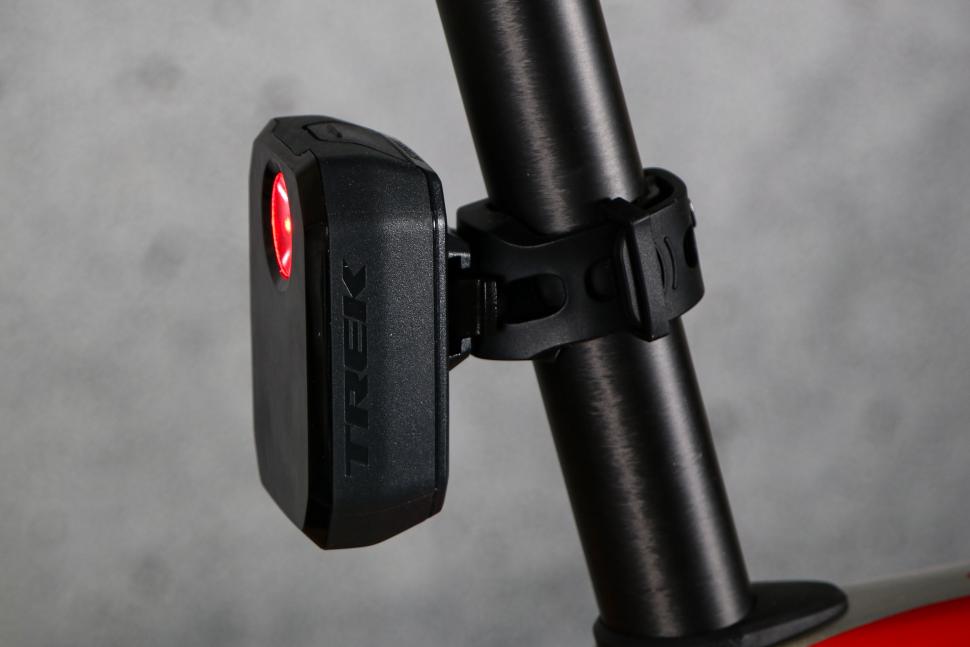
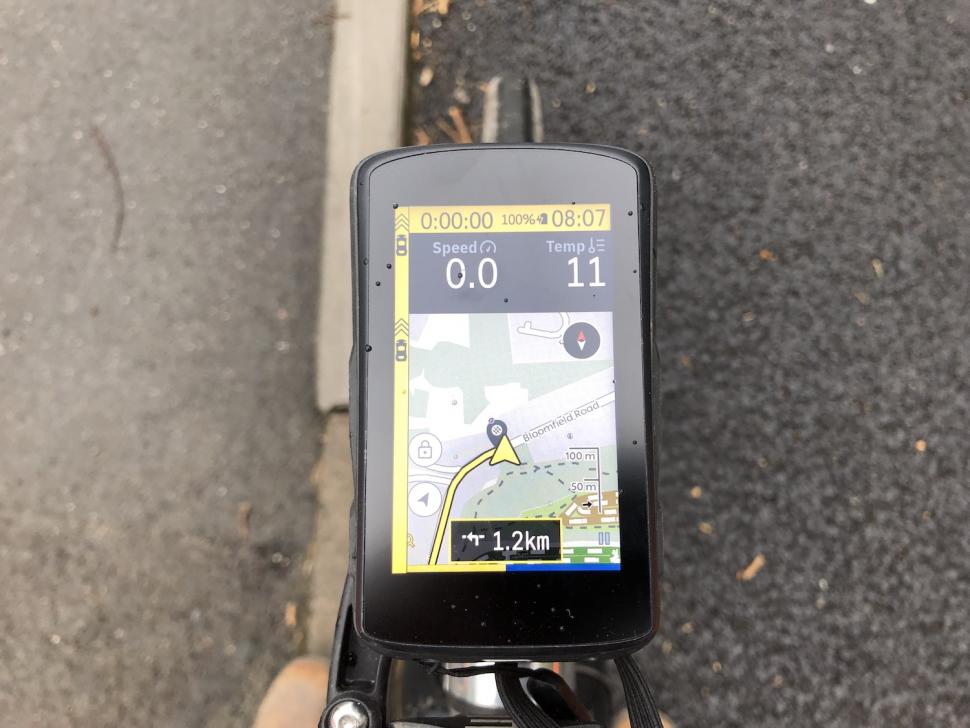











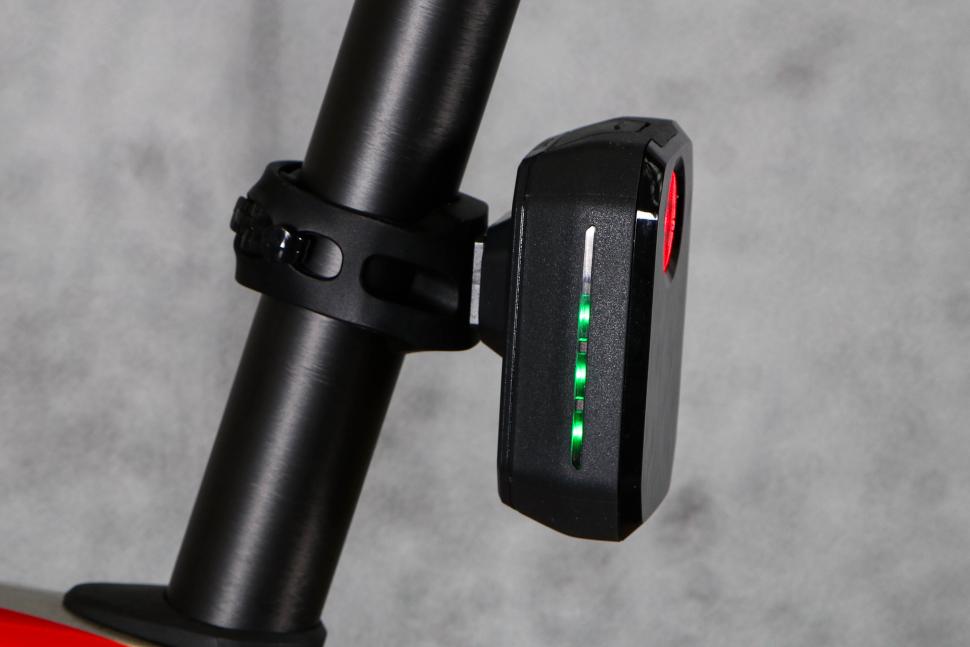

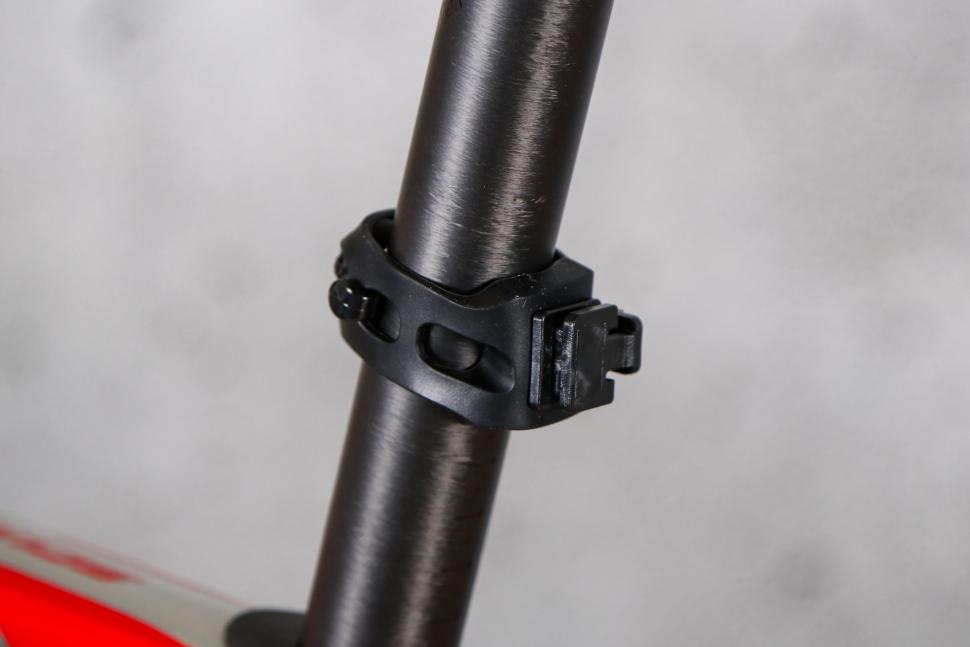

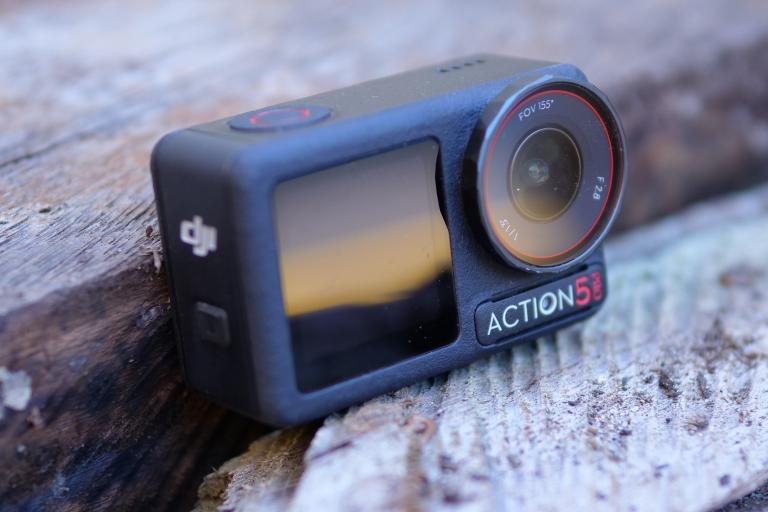

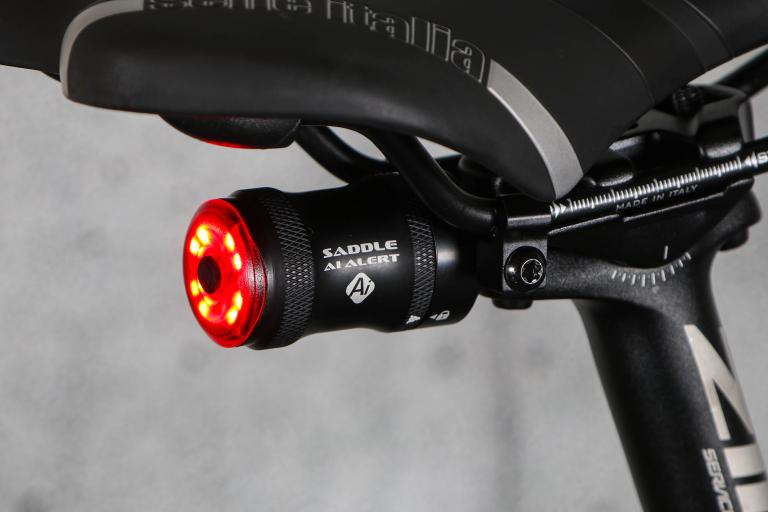
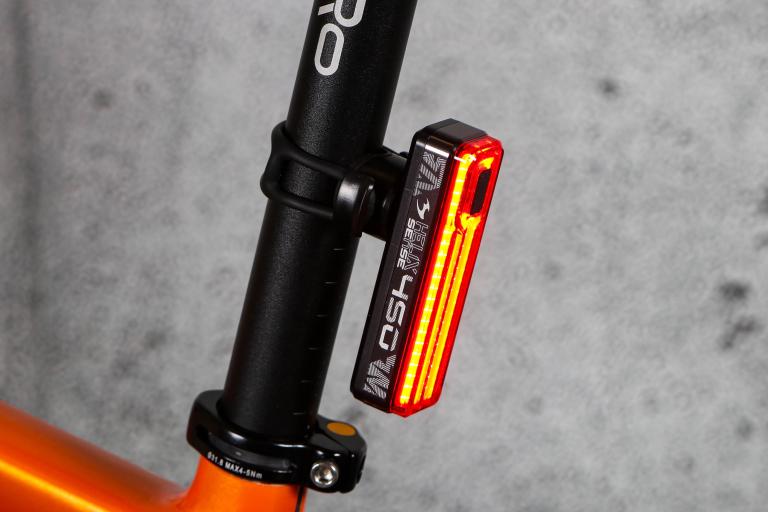
Add new comment
5 comments
Slightly off-topic, but I notice this is Trek branded, not Bontrager. Didn't all the lights used to be Bontrager? Are Trek going through some re-brand exercise to differentiate Bontrager "components"(wheels, 'bars, etc.) from Trek "accessories" like lights?
I think Bontrager will only be used for components like wheels and high end finishing kit etc (Even then there seems to be both names on items so maybe only wheels in the long run - Think Specialized & Roval). Other stuff like lights, helmets, shoes etc will be Trek from now on.
There is still Bontrager branded items available as a legacy until sold out. After that its Trek only I believe.
Yeah, that fits. Already seen the helmets, shoes etc. rebrand as Trek. Scott are pretty similar with their Scott and Syncros branding.
Good review. I own a Varia and it is an invaluable piece of kit and I never ride without it.
On this Trek one, I look at the rear light part of the product and come to the conclusion it is pretty much just a Bontrager/ Trek Flare RT light in the larger body assembly. This concerns me of its reliability, as I have owned 5 - Yes 5 in as many years and they just keep failing. I only get another due to Treks replacement policy. But I really do not rate the Flare as a light because of this. If its the very same tech then I fear this could cause another headache if you need to keep replacing radar units too.
Good review. I like to see the full range of 'award stars' in use to differentiate between good and 'meh' products. Same with the Ribble Allroad review yesterday.
The right-to-reply format is interesting too.